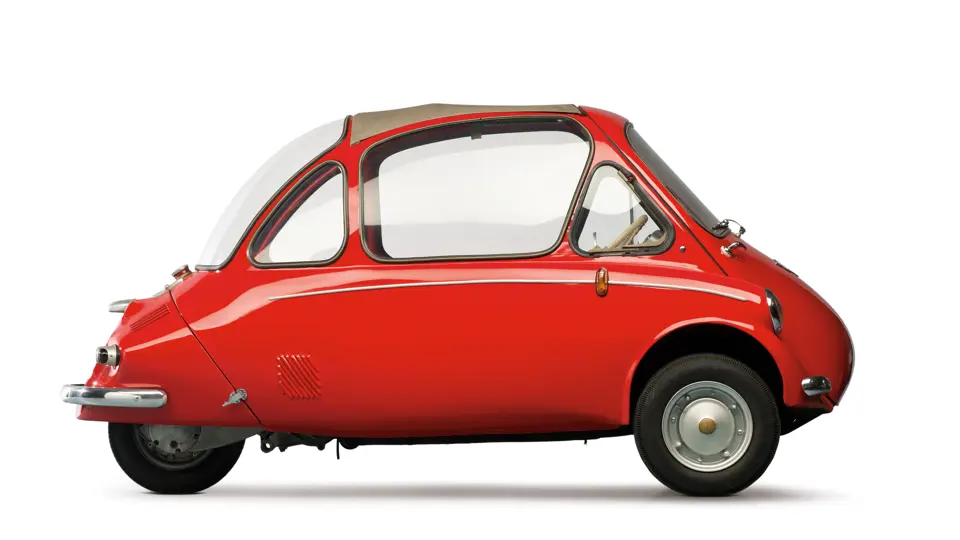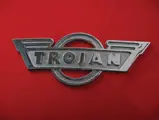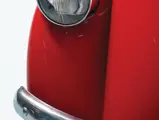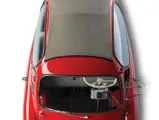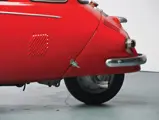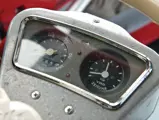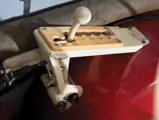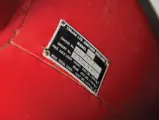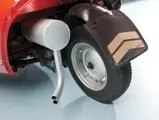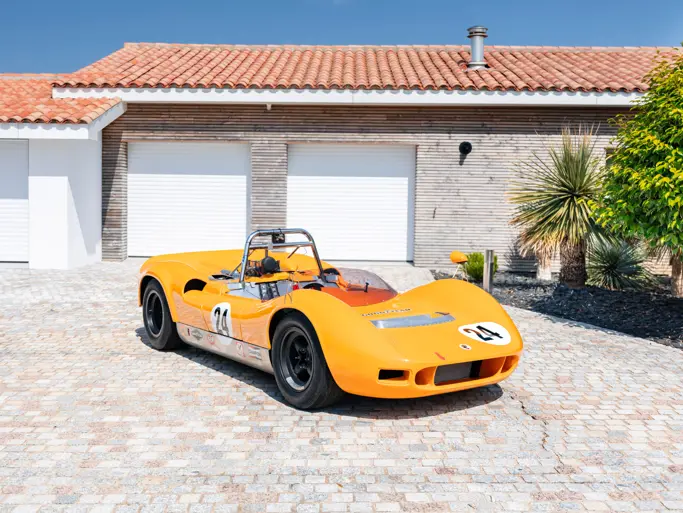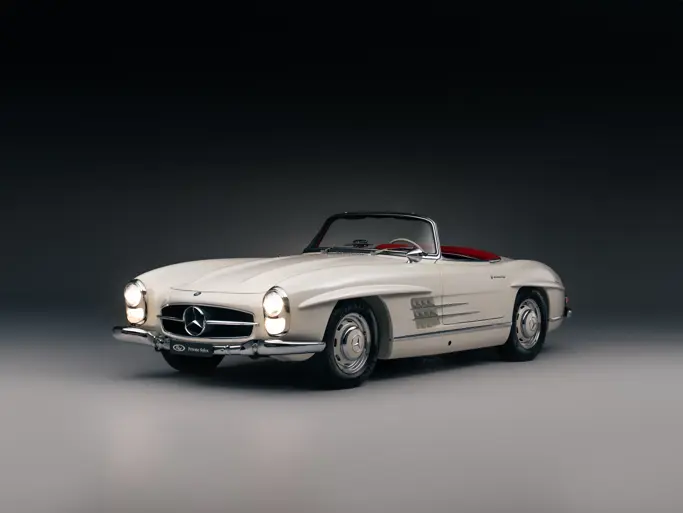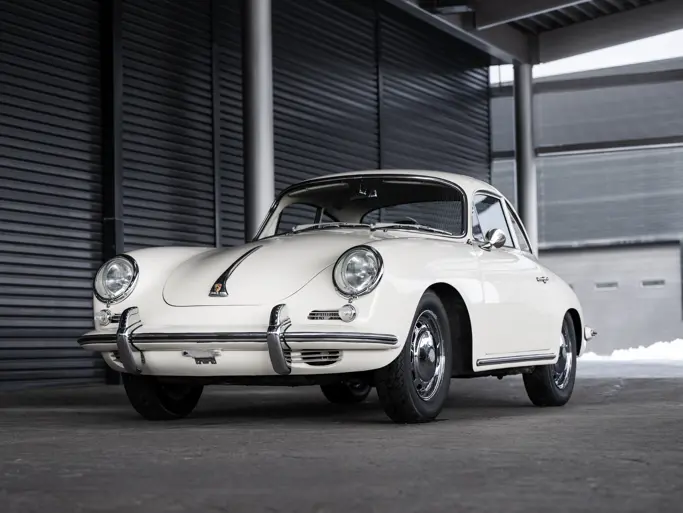A rare, three-wheeled, left-hand drive version.
SPECIFICATIONS
Manufacturer: Trojan Cars Ltd.
Origin: Croydon, Surrey, England
Motor: Heinkel 1-cyl., 4-stroke
Displacement: 198 cc
Power: 10 hp
Length: 8 ft. 10 in.
Identification No. XR7137
Dundalk Engineering in Ireland, formerly repairers of locomotives, took over production of the Kabine from Heinkel in 1958—a logical step since half of Heinkel production had already been going to the British Isles.
Britain enjoyed a long history as a bastion of tiny motor vehicles. Cyclecars persevered there longer than in any other country, even after the advent of the minuscule Austin Seven in 1922. The three-wheel Morgan remained in production through 1952, aided in part by its lower taxation and licensing requirements since it was classed as a motorcycle. The Suez Crisis of 1956 created yet another microcar boom, as Nasser’s closure of the canal interrupted oil supplies. Heinkels, Isettas, and other microcars found a ready market. Plans and tooling for the Heinkel were sent over to Dundalk in County Louth, but motors continued to be supplied by Heinkel. Production of the Heinkel-I took place in Ireland from 1958 to 1962. This, however, was the twilight of the microcar. The introduction of the British Motor Corporation’s Austin and Morris Minis in 1959 resulted in major changes in the public’s attitude towards their cars. Dundalk saw the writing on the wall and decided to sell.
Peter Agg, the Lambretta distributor for Britain since 1950, had purchased the long-lived commercial vehicle firm of Trojan, of Croydon in Surrey, in 1959. Originally built by Leyland Motors, the first Trojan was a utilitarian, almost agricultural car designed by Leslie Hounsfield. It enjoyed a brief vogue upon its introduction in 1922, but by the late-1920s, it had been sidelined by the Austin Seven. From 1928, Trojan Ltd. manufactured a wide range of commercial vans and pickups, and even some light buses.
Agg negotiated the deal for manufacturing the Heinkel-I by Trojan and received the supply of motors from Heinkel themselves. Essentially similar to the German Heinkel and Irish Heinkel-I, the Trojan was built with some British-sourced components, such as Armstrong shock absorbers, Wilmot-Breeden latches, and Wipac or Miller lamps. Vent windows were Plexiglas. A right-hand drive version was built, but the door was still hinged on the left. Three- and four-wheel versions were made.
The car did actually sell quite well, despite its late arrival, and plans were even made to expand the range with a commercial light delivery van, of which about six were built.
As they had in Ireland, sales continued to decline for market reasons, but a few cars a week continued to come off the line until early-1965. This Trojan 200 is a rare, three-wheeled, left-hand drive version with metric instrumentation, apparently intended for export to the Continent. Brilliant in red, it has blue-and-green Houndstooth seats and a tan roll-back fabric sunroof. A more iconic “bubble car” is difficult to imagine.
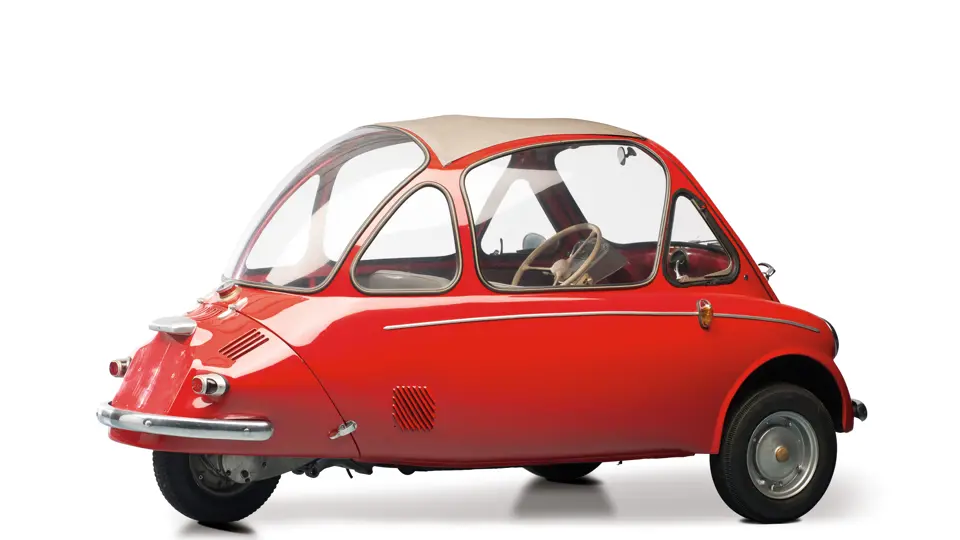



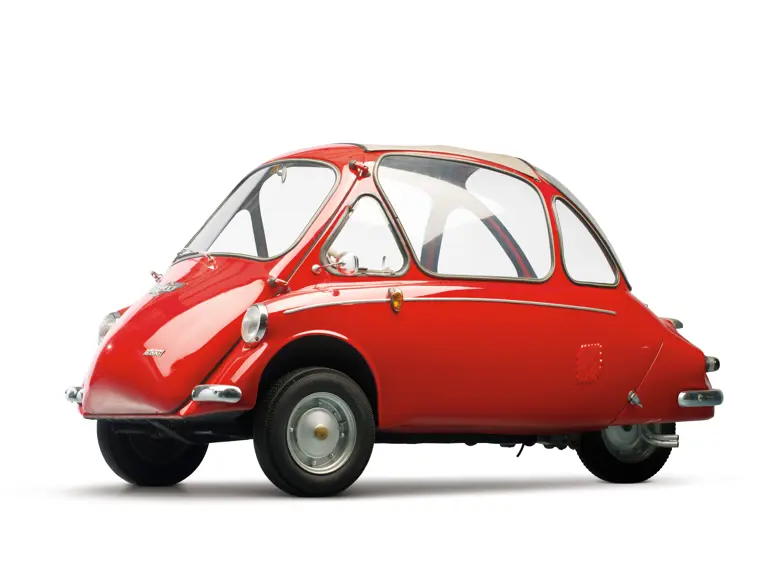
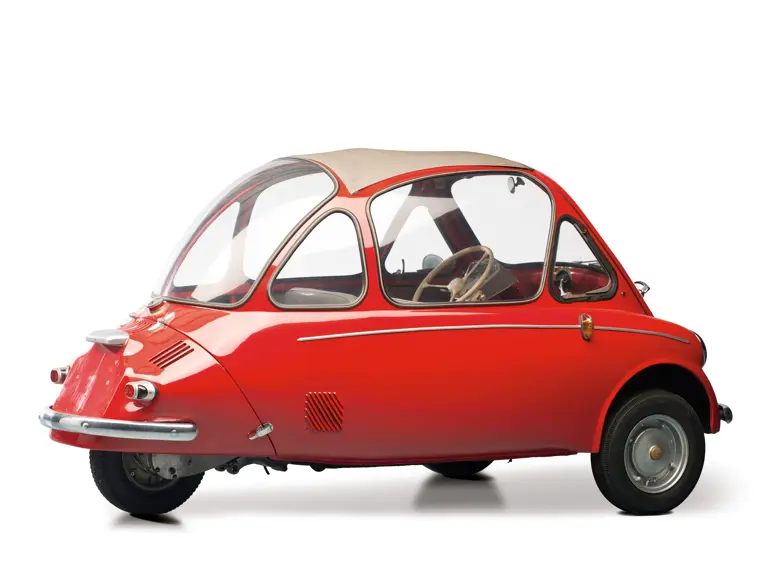

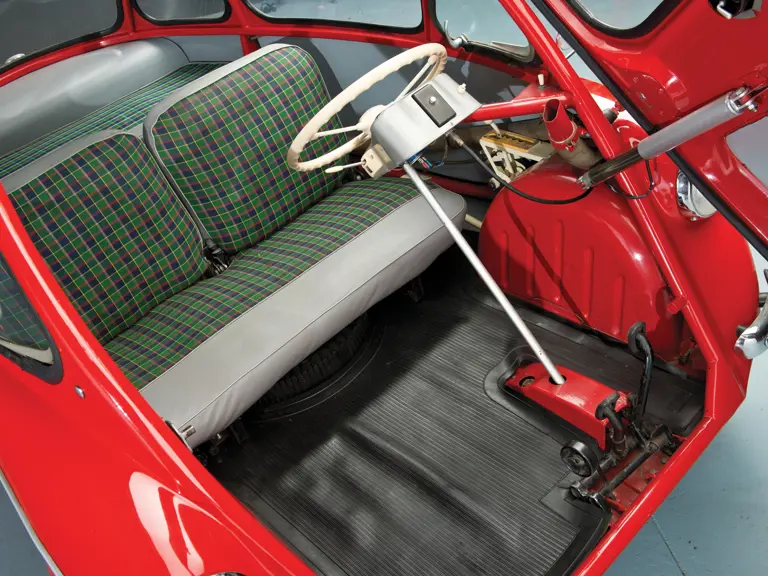

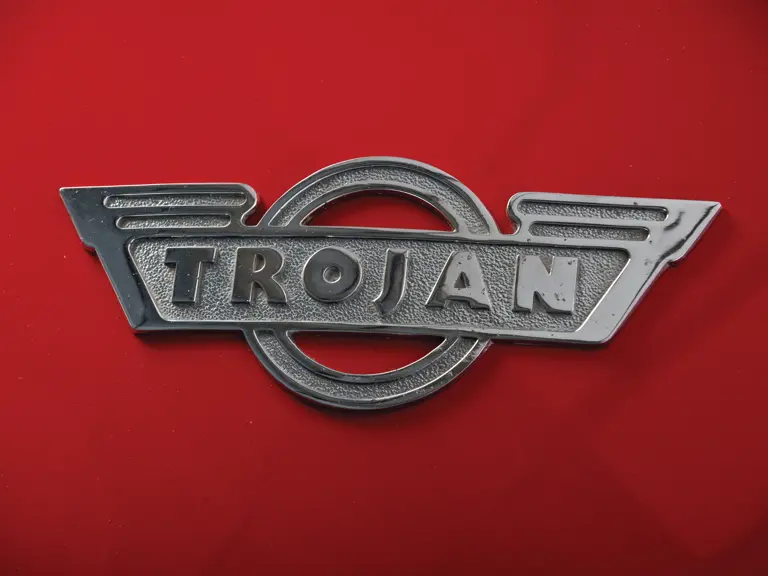
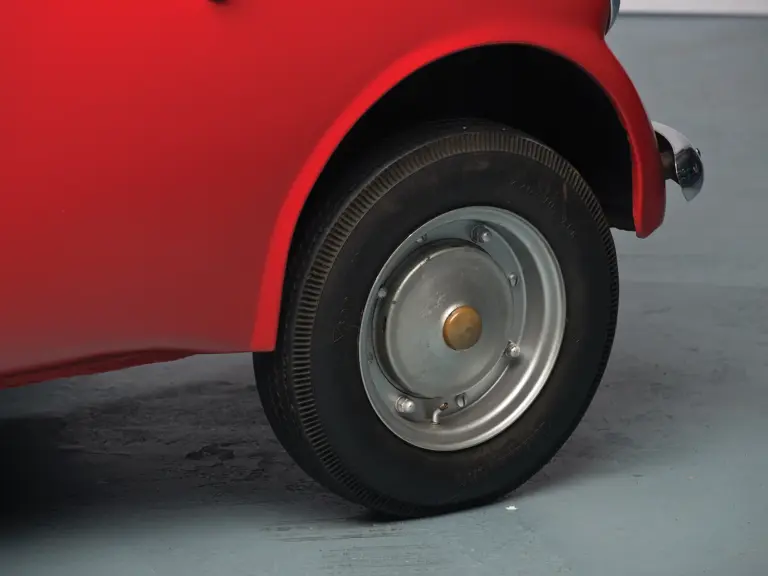
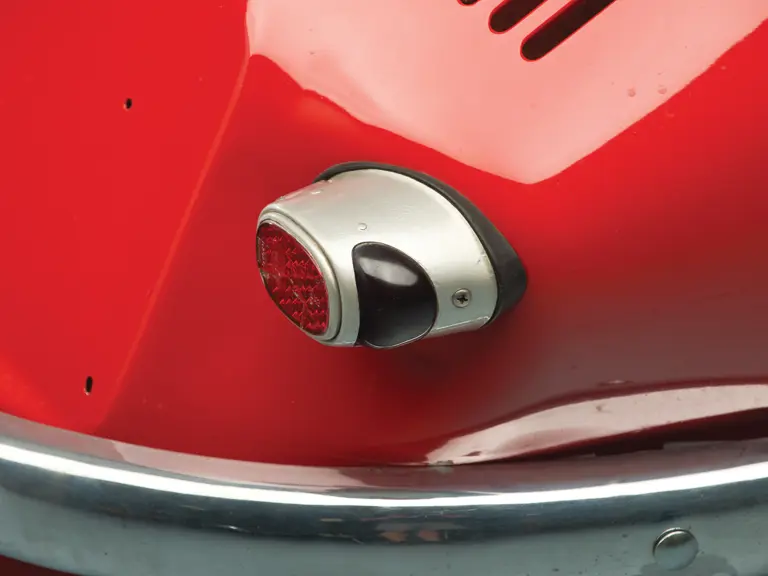

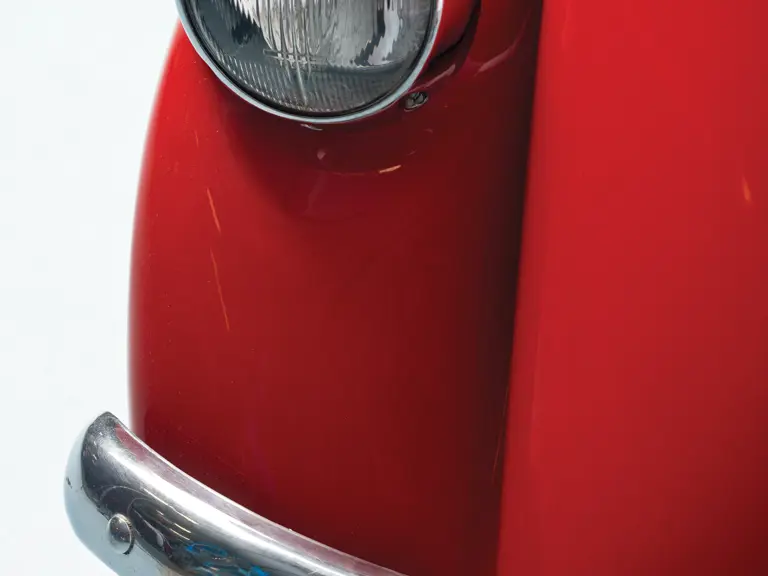

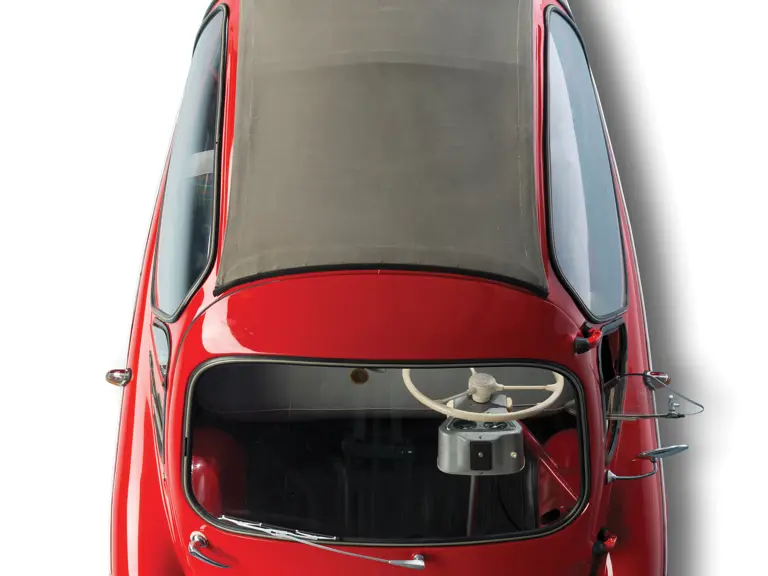
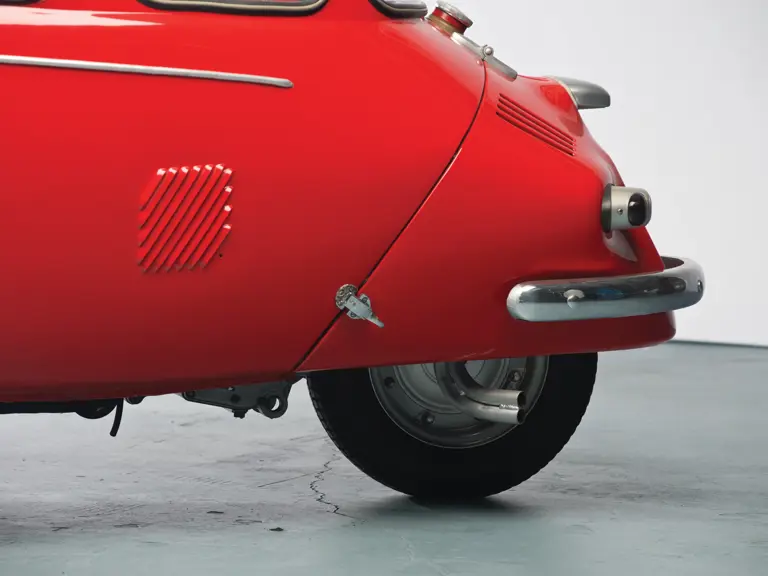

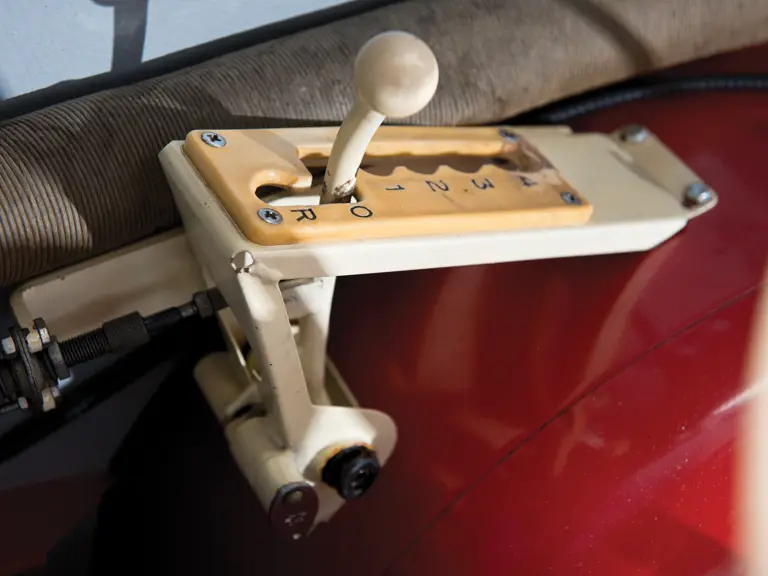


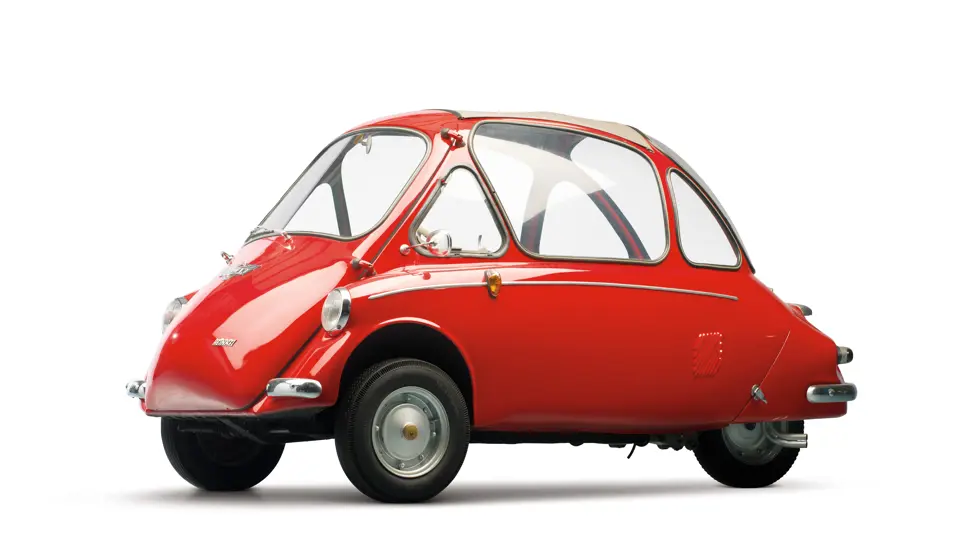
 | Madison, Georgia
| Madison, Georgia
